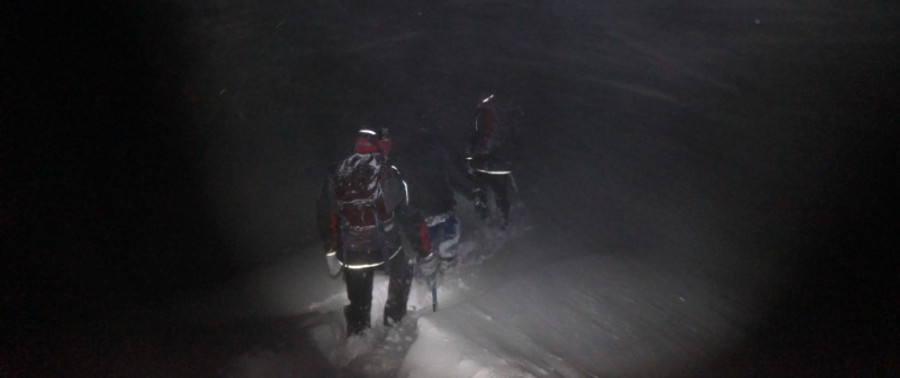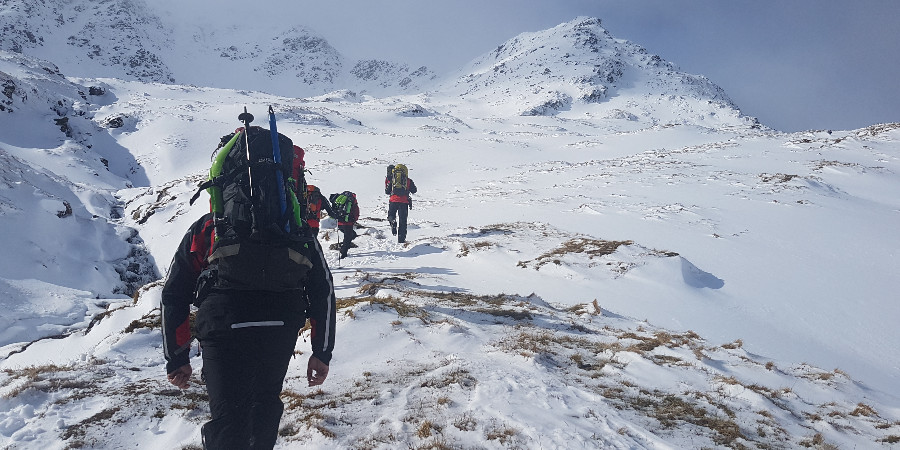By Darryl Ashford-Smith, Scottish Mountain Rescue
This article will give you an insight into how the volunteer rescue teams operate and, if the worst happens, what you and your party should have with you to stabilise the situation while waiting for professional help to arrive.

As winter fast approaches, are you asking yourself the ‘what ifs’ when you think about getting out into the hills?
Although Scottish Mountain Rescue teams can operate 24/7 in all weather, this does not mean they can always execute a rescue in a short space of time.
When teams are called out, a risk assessment will be carried out. If conditions put the rescuers at too much risk, difficult decisions will have to be made about how the rescue will be carried out and whether teams can deploy on the hill immediately or will wait for conditions to improve. It’s seldom that teams will have to postpone a search until first light or more favourable weather conditions, but it is a possibility.
Are you prepared, should something happen, to keep yourself safe and protected from the weather until help arrives? You may be fit and have the right mountaineering clothing for your day out but if you become immobile the effects of cold and darkness can take hold all too quickly.
So what should you do? This goes back to asking yourself the what ifs. It is the responsibility of mountaineers to be self-reliant, meaning that you should be able to deal with most foreseeable eventualities before calling for help. Generally, the advice is to make sure you have the necessary skills, gather information about the weather, conditions and route, learn basic self-rescue and first aid skills, wear and carry the right equipment and, finally, don’t be pressured to carry on when the best decision may be to turn back.
If for any reason you do become immobilised and have to wait for what may be several hours in daylight or darkness, here is some advice which may help.
Additional layers carried should include items such as an insulating layer which will keep you warm even when inactive. This is most likely to comprise a synthetic or fleece jacket which is lightweight and offers maximum insulation with minimal bulk.
Winter gloves and/or mitts should be carried. Gloves will offer more dexterity and are suited to more technical activities, while mitts will provide more warmth but less dexterity. With either choice, make sure they are waterproof. When packing your kit, also think about the what ifs. What if you lose a glove? Most winter gloves/mitts have wrist loops to secure them with but losing one could have serious consequences. You should pack at least one spare set of gloves and a spare hat, although many experienced mountaineers will take at least three pairs of gloves to allow for losses and for gloves becoming soaked through use.
Group shelters come in a number of sizes. Carrying enough shelters to take all of the group in one shelter or in separate shelters is sound advice. As well as being used for emergencies, they can be used for a break from the weather while stopping for lunch, for example, ensuring you maintain energy levels and keep warm rather than pressing on which is when bad decisions can be taken.
A survival bag/blanket should also be carried by each individual, which can be used in addition to the group shelter or as a last resort should someone become split from the group. It will slow the onset of hypothermia which can develop quickly when stationary. A poly bag/blanket will offer some protection from rain and wind but provides no insulation. A foil blanket works by reflecting heat back to the body, however offers minimal protection from wind and rain so any reflected heat can be lost quickly. There are survival bags and blankets available that are of a layered construction so offer protection from the wind and rain as well as thermal protection. They are a significant step-up from a conventional survival bag or blanket so would be the first choice. If conditions mean a rescue team cannot get to you for some time, using such a shelter may be a life saver.
A head torch should be carried in all seasons, however batteries may not last as long in the winter due to the cold. At the very least, spare batteries should be carried, but it is preferable to carry a spare head torch (with fully charged batteries). Without light, the situation may turn from manageable to fraught.
Hopefully this article will act as a reminder as winter quickly approaches and sends the message that preparation and planning with time taken to research is the key to a successful and safe day out.
